Who’d have thought fake people could put on such a kickass show?
The last time I played one of these, the phrase “pop songs as sung by Siri” popped into my head, which might be a bit harsh but not altogether inaccurate. Hatsune Miku is a series centered around the titular character, who is a popular virtual idol with a completely computerized voice—long neon-blue hair, headphones eternally over her ears, perfectly-choreographed dance moves, the whole nine. And on the 3DS in Project Mirai DX, instead of trying to appear as a 3D anime-styled idol, all of the idols in the package are short, squatter chibi figures that are just adorable.
There isn’t a story anywhere here, just the experience with digital idols. In the rhythm game, you either tap the right space on the bottom screen or the correct button at the correct time as it moves down the string on the screen. Some strings will merge or end and be picked back up with another string, similar to that of Gitaroo Man. Difficulty determines just how many different buttons are in play; in Tap Mode (using only the bottom screen) that would be one, two, or three different spaces, while in Button Mode (which can also use the bottom screen, but primarily the right-side diamond of buttons) the option is either two, three, or all four. But even with four, a stage is rarely too overwhelming, and the difficulty is spelled out when selecting the song on a scale of 1-9. So you’ll gauge your ability quickly enough.
Many of the songs are genuinely catchy, from “standard” formulaic pop tracks performed in “the future," to playful piano lounge acts acted out in a nightclub stage, and even one chiptune-inspired song with a video reminiscent of 3D Dot Game Heroes and classic NES-style touches everywhere. As this is a series featuring virtual idols, some of the songs sound like an auto-tuned SIRI (especially if there’s more than one singer, for some reason), but by and large this batch of tracks sound more natural, the auto-tuned sound more a style choice than a deliberate attempt to force notes into the right octave and pitch.
One thing that makes the occasional song more difficult is the active, clashing background movements. Since these are music videos behind the playfield, there can be a problem differentiating between button presses and video movement. Thankfully, this isn’t quite as problematic as it was in Project Diva F 2nd (where it could be painfully noticeable) but there are still a few songs that this occurs on, especially if you’re playing at higher difficulty settings. But those videos are still really interesting and worth watching later, and I noticed that even if I wasn’t particularly a big fan of the song, I still enjoyed the video, or if I was disappointed in the video I could still like the song. With nearly 50 different songs, you’ll find something to like, and you can even create a playlist of your favorites. I can say from first-hand experience that these also make for great review-writing music.
When you’re ready to take a breather from the music, you can choose to either choreograph your own dance routines to unlocked songs or create your own music. Both take some skill and some basic understanding of the tools, and while the music is straightforward—you can drop notes and sounds the same way as you might in the Mario Paint Music Maker program—it’s more of a chore to choreograph an unlocked song. It’s still designed to be as idiot-proof as possible, with even my “choreography” looking like a Just Dance routine.
Notice that I said “the experience with digital idols” before? That’s because this isn’t just a rhythm game; it’s a sort of “idol Tamagotchi” where you can make friends with your idol. Before, this was hanging out in their room, buying them things like snacks and outfits used in their music videos, and decorating their apartment space with furniture and even idol-ized versions of famous paintings. Unless you’re really into Japanese pop, spoiling “celebrities”, and interior design, that was a bland addition to the experience. Now there’s a reason to actually hang out in their room: You can play additional, not-music-related games with your characters (though the music may still play in the background).
Specifically, there are two games here I adore: Reversi/Othello and a stripped-down version of Puyo Puyo. You can play against your best idol friend on the Reversi board, or you can use them to beat five rounds of head-to-head Puyo Puyo for a cumulative ranking. If you need a break from the main game, Project Mirai DX offers other options and that's great. And just like playing the songs (though at a smaller level) you still can earn points with which to purchase new outfits previously used in videos, snacks, and drinks for your idol friend, and furniture with which to decorate their purposefully-sparse apartments. Hooray, they can be more than just spoiled digital Biebers!
With the exception of the backgrounds being occasionally distracting from the strings of buttons on the occasional track, there really isn’t anything negative here. If you’re musically inclined, the tools for pre-created choreography and creating your own music are far from professional but definitely workable. And once you’re finished for a while, a nice game of Reversi against your digital idol of choice can lighten you up for another challenging song. It would be neat if you could share those playlists either with friends or through Streetpass, but there’s enough here that it’s a minor request. Bottom-line, this might be the best thing Sega has going for it right now. And I’m enjoying every moment of it.
(At least until the alarm goes off to wake me up to my song of choice, because yes… this game even comes with its own alarm clock function. It’s like they’ve thought of everything!)
-
Song list is growing every new game, and many are quite good
-
Controls are easy to pick up and start playing
-
Puyo Puyo and Reversi at no extra cost!
-
Videos are unique and wonderful
-
Create your own music and choreography easy to fiddle with
-
Background videos can be distracting or disruptive during play
-
Songs are not always challenging, even at higher difficulties
-
There’s even a friggin’ ALARM CLOCK function
Hatsune Miku Project Miari DS Screens
-
Hatsune Miku Project Miari DS Screens #1
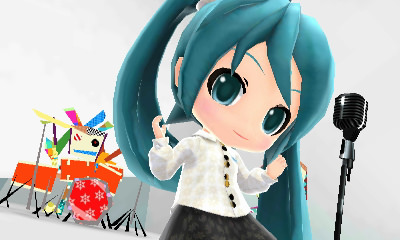 (Click to enlarge)rn
(Click to enlarge)rn -
Hatsune Miku Project Miari DS Screens #2
 (Click to enlarge)rn
(Click to enlarge)rn -
Hatsune Miku Project Miari DS Screens #3
 (Click to enlarge)rn
(Click to enlarge)rn -
Hatsune Miku Project Miari DS Screens #4
 (Click to enlarge)rn
(Click to enlarge)rn -
Hatsune Miku Project Miari DS Screens #5
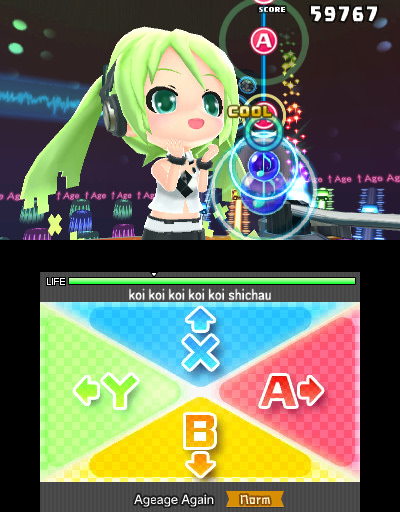 (Click to enlarge)rn
(Click to enlarge)rn -
Hatsune Miku Project Miari DS Screens #6
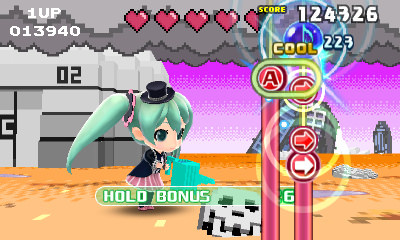 (Click to enlarge)rn
(Click to enlarge)rn -
Hatsune Miku Project Miari DS Screens #7
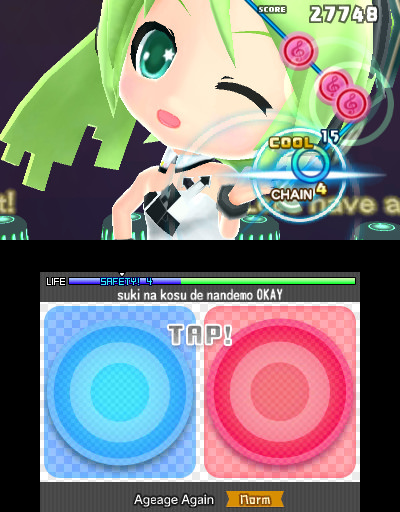 (Click to enlarge)rn
(Click to enlarge)rn -
Hatsune Miku Project Miari DS Screens #8
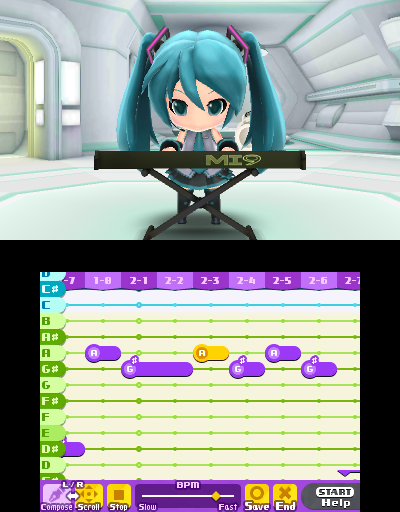 (Click to enlarge)rn
(Click to enlarge)rn -
Hatsune Miku Project Miari DS Screens #9
 (Click to enlarge)rn
(Click to enlarge)rn







